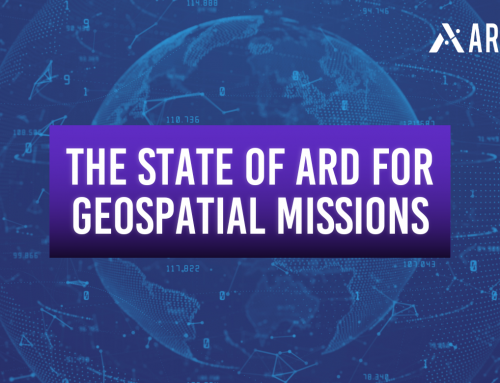Understanding Geospatial Data Silos
As the demand for precise and actionable insights continues to rise, the effective use of geospatial data becomes increasingly critical. From urban planning and environmental monitoring to disaster response and logistics, the ability to access and utilize spatial information drives a wide range of applications. However, many organizations encounter a significant obstacle… geospatial data silos. These isolated data repositories can impede data integration and limit the value derived from geospatial information. In this blog, we’ll delve into what geospatial data silos are, common challenges, and how to overcome them to fully leverage the power of your spatial data.
What are Geospatial Data Silos?
Before we dive into the common issues associated with geospatial data silos, it’s important to first grasp what they are. Geospatial data silos refer to isolated sets of geographic or spatial data that are not easily accessible or shareable across different systems, departments, or organizations. These silos can occur due to a variety of reasons, such as different data formats, incompatible software systems, or organizational barriers. As a result, valuable geospatial information may remain confined within individual systems, preventing a comprehensive view of spatial data.
Common Problems Faced with Geospatial Data Silos

Inconsistent Data Access
When geospatial data is stored in silos, accessing it becomes challenging. Different departments or teams might have their own data repositories, each with its own format and system. This fragmentation can lead to inconsistencies and difficulties in retrieving and using data effectively, making it harder to achieve a unified understanding of spatial information.
Limited Data Integration
Geospatial data silos prevent the integration of information from various sources. For instance, combining data from satellite imagery with local environmental data might be difficult if these datasets are stored in different systems. This lack of integration can limit the ability to perform comprehensive analyses and generate valuable insights.
Increased Data Duplication
In an environment with multiple data silos, different teams or departments might duplicate data collection efforts. This redundancy not only wastes resources but also increases the risk of inconsistencies and errors in the datasets. Streamlining data management can help avoid such duplications and ensure more accurate and reliable information.
Inefficient Decision-Making
Decision-making processes can be significantly hampered by geospatial data silos. When data is not easily accessible or integrated, it can lead to delays in decision-making and reduce the quality of decisions. For example, emergency response teams might struggle to coordinate their efforts effectively if they don’t have access to a complete and integrated view of relevant geospatial data.
Reduced Collaboration
Geospatial data silos can hinder collaboration between different stakeholders. When data is confined to specific systems or departments, it becomes challenging for various teams to work together and share information. Effective collaboration requires seamless access to shared data, which is often impeded by data silos.
Solutions to Overcome Geospatial Data Silos
Implement Data Integration Platforms
One of the most effective ways to address geospatial data silos is by using data integration platforms. These platforms can aggregate data from various sources, standardized formats, and provide a unified interface for accessing and analysing geospatial information. Tools such as Geographic Information Systems (GIS) or cloud-based data management solutions can facilitate this integration.
Adopt Open Data Standards
Adopting open data standards can enhance data interoperability and reduce the barriers between different systems. Standards such as the Open Geospatial Consortium (OGC) standards ensure that geospatial data can be easily shared and integrated across different platforms and applications. Using these standards helps in creating a more cohesive data ecosystem.
Promote Data Governance and Management
Effective data governance is essential for managing and eliminating geospatial data silos. Establishing clear policies and practices for data management, including data sharing and access controls, can help in reducing silos. Encouraging collaboration and setting up cross-departmental teams can also improve data management practices.
Invest in Training and Education
Training and educating staff on best practices for data management and integration can help in overcoming geospatial data silos. Ensuring that team members are familiar with data integration tools, standards, and governance policies will enable them to work more effectively with geospatial data.
Leverage APIs for Data Access
APIs (Application Programming Interfaces) can facilitate seamless data access and integration. By using APIs, organizations can connect disparate data sources and enable applications to retrieve and interact with geospatial data more efficiently. This approach helps in breaking down data silos and promoting more effective data use.
Conclusion
Geospatial data silos present significant challenges for organizations that rely on spatial information for decision-making and analysis. By understanding the impact of these silos and implementing solutions such as data integration platforms, open data standards, and effective data governance, organizations can overcome these barriers. Addressing geospatial data silos not only enhances data accessibility and integration but also improves collaboration and decision-making, leading to more informed and effective outcomes.
For more information on managing geospatial data silos or to explore specific tools and strategies, check out Geostack or feel free to reach out!





